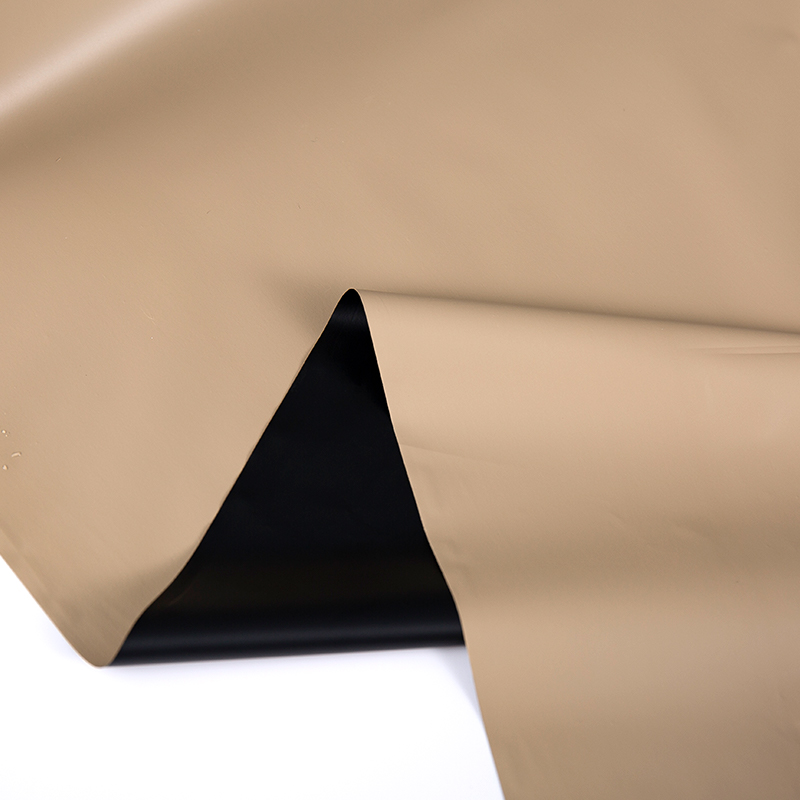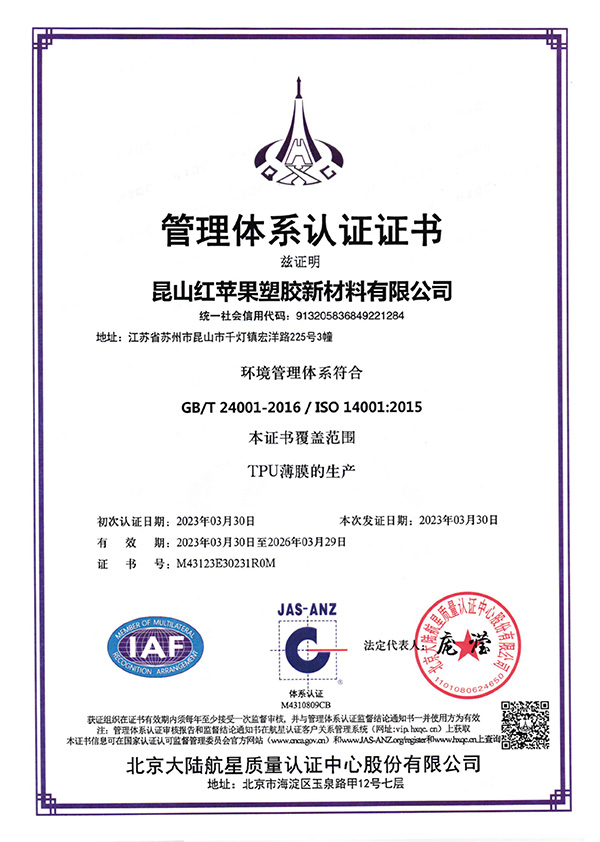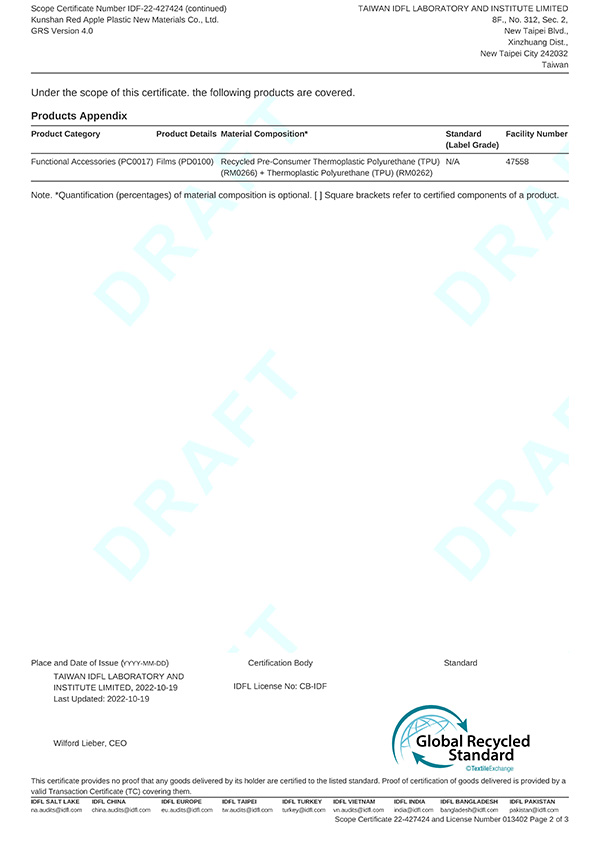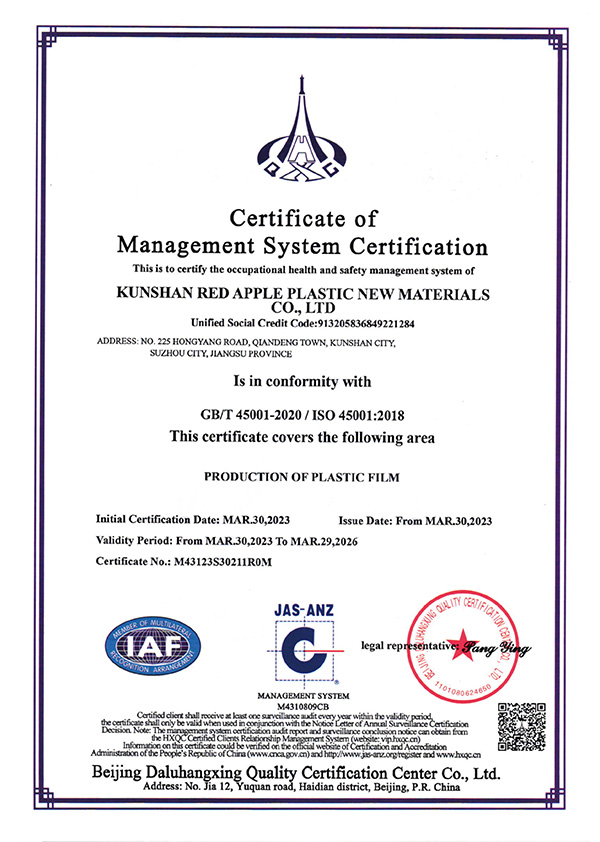Surface Aesthetics Enhanced by Advanced Printing Technology Printed PU film enhances the visual presentation of finished products by combining high-definition printing with precision surface control. Through digital or g...
READ MORESystem Certification
As PU Film Manufacturers, our award of GRS, OEKO-TEX, ISO14001 and ISO45001 certifications as a high-tech company demonstrates our excellence in technological innovation, environmental protection and employee health and safety.


-
-
Understanding TPU Film and Its Material Variations Thermoplastic polyurethane (TPU) film is a versatile material known for its elasticity, waterproofness, breathability, and excellent tear resistance. Depending on the mo...
READ MORE -
Understanding What Flame Retardant Films Are Flame retardant films are engineered polymeric sheets designed to resist ignition and inhibit flame propagation when exposed to heat sources. Unlike standard films, these mate...
READ MORE
Can the PU film maintain its waterproof properties while allowing moisture vapor to escape?
PU film can indeed maintain its waterproof properties while allowing moisture vapor to escape, which is a key feature of breathable fabrics and films. This is commonly referred to as waterproof-breathable technology.
Waterproofing Mechanism:
The PU film is designed to prevent water from passing through, typically using a dense molecular structure that blocks water molecules. This makes it waterproof and ideal for applications where moisture from the outside needs to be kept out (e.g., jackets, rain gear, or outdoor equipment).
Breathability:
Despite being waterproof, PU film can still allow moisture vapor (sweat) to escape. This is typically achieved through the micro-porous structure of the PU film, where the pores are small enough to block liquid water from passing through but large enough to let water vapor molecules escape.
The moisture vapor permeability (MVP) of PU films can vary, but high-quality PU films often have breathability ratings between 1,000 to 10,000 grams of water vapor per square meter per 24 hours (g/m²/24hr). This indicates how much moisture vapor can pass through the film over a day.
Moisture Regulation:
This combination of waterproofing and breathability makes PU film perfect for applications like outerwear, footwear, and medical textiles, where keeping the wearer dry from external water (e.g., rain) is important, while also allowing perspiration to escape, preventing discomfort and overheating.
Performance in Different Environments:
The performance of waterproof-breathable PU films can be influenced by temperature and humidity. In warm or humid conditions, the vapor permeability helps prevent moisture buildup inside the garment or product, making it comfortable to wear. In cold environments, the moisture can still escape, while the waterproof barrier helps retain warmth by keeping external water out.
Applications:
The balance of waterproofing and breathability is especially important in sportswear, outdoor clothing, medical pads, and sleeping bags, where the goal is to keep the body dry without causing excessive sweating or moisture buildup.
High-quality PU films can indeed maintain their waterproof properties while allowing moisture vapor to pass through, making them ideal for applications that require both water protection and breathability.


 Español
Español
















